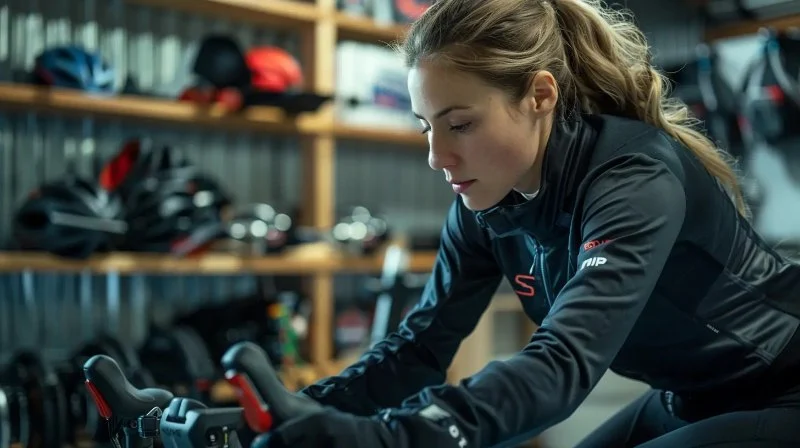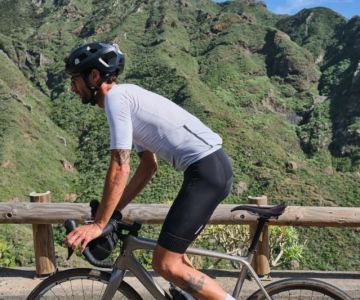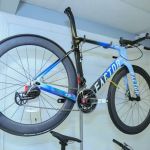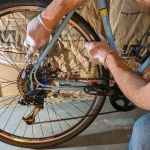
How to Balance Cycling With Strength Training
- 1. Understanding the Importance of Balancing Cycling and Strength Training
- 2. Benefits of Combining Cycling and Strength Training
- 3. How to Create a Balanced Workout Schedule
- 4. Choosing the Right Strength Training Exercises
- 5. Recovery and Rest
1. Understanding the Importance of Balancing Cycling and Strength Training
Many cyclists focus solely on their endurance through cycling, but neglecting strength training can limit performance and increase the risk of injury. A balanced approach to training that includes both cycling and strength exercises can lead to improved overall fitness, increased power on the bike, and better injury prevention.
Strength training helps cyclists build muscle mass, improve posture, and develop the core stability necessary for handling rough terrains. By incorporating strength training into your routine, you can enhance your cycling efficiency and endurance, resulting in better race times and more enjoyable rides.
2. Benefits of Combining Cycling and Strength Training
Combining cycling with strength training offers a range of benefits for cyclists, both in terms of performance and overall health:
- Improved cycling performance: Strength training builds muscle groups that help you generate more power while cycling, particularly in your legs and core. Stronger muscles allow you to cycle faster, climb hills with ease, and maintain a consistent pace.
- Increased endurance: By adding strength training, you target muscles that might not be engaged fully during cycling, thus improving overall endurance. This allows you to ride longer without experiencing muscle fatigue.
- Injury prevention: Cycling can lead to muscle imbalances if only endurance training is prioritized. Strength training strengthens not just the legs, but the back, hips, and core, reducing the likelihood of common cycling injuries like lower back pain or knee strains.
- Enhanced muscle recovery: A well-rounded fitness routine helps promote faster recovery. Strengthening muscles helps them recover faster after long rides, reducing soreness and the risk of overuse injuries.
3. How to Create a Balanced Workout Schedule
Balancing cycling with strength training requires careful planning to avoid overtraining and ensure you're getting the most out of both types of workouts. Here’s how to structure your training schedule effectively:
- Schedule strength training on non-cycling days: Ideally, you should aim for 2-3 strength training sessions per week, spaced out on days when you’re not cycling. This allows your body to recover between sessions while still benefiting from muscle-building exercises.
- Combine shorter cycling sessions with strength training: If you're cycling every day, consider limiting your bike rides to shorter, high-intensity intervals on days when you're also strength training. This helps prevent fatigue and ensures that you're not overloading your muscles.
- Plan for rest days: Both cycling and strength training can be taxing on the body. Incorporate at least one or two rest days each week to allow your muscles to recover and prevent overtraining.
By creating a balanced training schedule that incorporates both cycling and strength training, you will maximize performance gains and minimize injury risks.
4. Choosing the Right Strength Training Exercises
The key to effective strength training for cyclists is choosing exercises that complement your riding. Focus on exercises that build the muscles used during cycling, particularly in the legs, core, and lower back. Here are some of the best exercises for cyclists:
- Squats: Squats are one of the best exercises for building lower body strength, targeting the quadriceps, hamstrings, and glutes. Strong legs are essential for climbing and sprinting.
- Deadlifts: Deadlifts engage multiple muscle groups, including the hamstrings, glutes, and lower back. This exercise is great for building strength and stability in the posterior chain, which supports proper cycling posture.
- Lunges: Lunges help build leg strength and improve balance, both crucial for cycling efficiency. They also work the hip flexors, an area often neglected during cycling.
- Planks: A strong core is essential for maintaining proper cycling form and transferring power from your legs to the pedals. Planks help strengthen the core and improve stability.
- Leg Press: The leg press machine is an excellent way to build leg strength and power, especially for cycling-specific muscle groups like the quadriceps and glutes.
Focusing on these exercises will complement your cycling training, helping you improve performance and reduce fatigue during long rides.
5. Recovery and Rest
Proper recovery is an essential aspect of balancing cycling and strength training. Without adequate rest, your body will struggle to rebuild muscle and improve performance. Here are some tips to enhance recovery:
- Rest days: Give yourself time to recover between cycling and strength training sessions. This will allow muscles to repair and grow stronger, reducing the risk of injury.
- Active recovery: On rest days, consider low-impact activities like walking or swimming to promote blood flow without putting additional strain on your muscles.
- Stretching and foam rolling: Incorporate stretching and foam rolling into your routine to alleviate tightness in the muscles. This can help improve flexibility and reduce soreness after both cycling and strength training.
- Proper nutrition: Fuel your body with the necessary nutrients, such as protein and carbohydrates, to support muscle recovery. Hydration is also key to replenishing fluids lost during cycling and workouts.
By prioritizing recovery, you'll enhance both your cycling performance and strength training results, ultimately achieving better fitness and longevity in your training routine.







 Ride On! Bike Shop/Co-Op4.0 (61 reviews)
Ride On! Bike Shop/Co-Op4.0 (61 reviews) DWMEIGI ELECTRIC BIKE5.0 (1 reviews)
DWMEIGI ELECTRIC BIKE5.0 (1 reviews) Gary's Cycle Shop4.0 (100 reviews)
Gary's Cycle Shop4.0 (100 reviews) Richard's Cyclery4.0 (67 reviews)
Richard's Cyclery4.0 (67 reviews) Tampa Bay eBikes4.0 (64 reviews)
Tampa Bay eBikes4.0 (64 reviews) Roberio Cycling Lab4.0 (27 reviews)
Roberio Cycling Lab4.0 (27 reviews) How to Teach Kids to Ride a Bike: A Step-by-Step Guide for Parents
How to Teach Kids to Ride a Bike: A Step-by-Step Guide for Parents Tips for Riding on Busy City Streets: Smart Strategies for Urban Cyclists
Tips for Riding on Busy City Streets: Smart Strategies for Urban Cyclists Best US National Parks for Mountain Biking: Ride Epic Trails Across America
Best US National Parks for Mountain Biking: Ride Epic Trails Across America Best Aero Helmets for Time Trials and Racing
Best Aero Helmets for Time Trials and Racing How to Clean and Lubricate Your Bike Chain Like a Pro
How to Clean and Lubricate Your Bike Chain Like a Pro 10 Must-Have Items for Long-Distance Cycling Trips
10 Must-Have Items for Long-Distance Cycling Trips